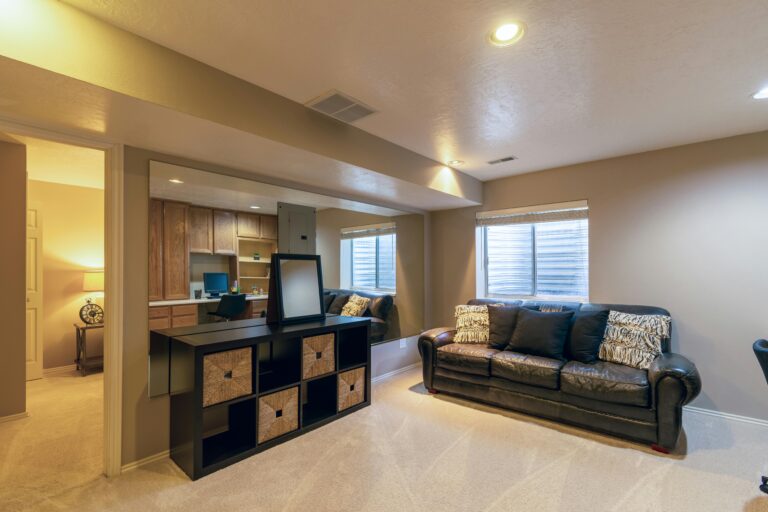Kitchen Transformations: From Layout Woes to Wow Factor
Your home is more than just shelter; it’s a reflection of your personality and a sanctuary for daily life. Yet, over time, walls fade, trim loses its luster, and dated woodwork can make even a well-loved space feel tired. This is where the transformative power of paint and carpentry comes in. These two disciplines, when mastered, offer unparalleled potential to revitalize your environment without requiring a full renovation. A fresh coat of paint can alter mood and perception in hours, while thoughtful carpentry—like new crown molding or built-in shelves—adds structural elegance and functionality. Together, they boost property value, enhance well-being, and turn mundane rooms into inspiring havens. For DIY enthusiasts and homeowners alike, these skills are essential tools for crafting a home that evolves with you.
Choosing the Right Paint: Beyond Color Swatches
Selecting paint involves more than picking a hue. First, assess your space’s lighting: north-facing rooms benefit from warm tones (e.g., creamy yellows), while south-facing spaces can handle cooler shades (e.g., soft grays). Next, consider sheen. High-traffic areas like kitchens demand durable satin or semi-gloss finishes, whereas matte works well for low-impact ceilings. Quality matters—invest in premium acrylic-latex blends for better coverage and longevity. Always prepare surfaces meticulously: fill cracks with spackle, sand smooth, and use a stain-blocking primer on watermarks or knots. For example, a homeowner in Seattle transformed a gloomy basement by using light-reflecting pale blue (eggshell finish) after sealing concrete walls with moisture-resistant primer, eliminating mildew concerns.
Carpentry Upgrades: Functional Artistry
Carpentry elevates a home’s architecture through both repair and innovation. Start with foundational fixes: replace rotted window sills using pressure-treated pine, or reinforce sagging shelves with hidden L-brackets. Then, explore value-adding projects:
- Built-ins: Custom bookcases or window seats maximize unused corners.
- Trim work: Install crown molding or wainscoting to add depth; use a coping saw for seamless corner joints.
- Doors and cabinets: Reface outdated units with veneer panels instead of full replacements.
A case study from Austin shows how adding shaker-style plywood cabinet fronts and floating oak shelves modernized a 1980s kitchen for under $500, proving carpentry’s cost efficiency.
Harmonizing Paint and Wood: The Design Synergy
Paint and woodwork should complement, not compete. For cohesive results, match undertones: warm wood stains (like cherry or walnut) pair with red/beige-based paints, while cool-toned woods (ash, maple) align with blues or grays. Highlight architectural features by painting trim a crisp white against bold walls, or stain wood elements to contrast muted backgrounds. In open-plan spaces, use consistent trim colors to unify zones. Pro tip: Test samples on both drywall and a spare wood scrap to observe interactions under natural and artificial light. A Chicago loft achieved industrial-chic harmony by painting exposed brick a matte charcoal and refinishing original pine beams with a clear, satin polyurethane to preserve warmth.
Mistakes to Avoid: Wisdom from the Trenches
Even seasoned DIYers encounter pitfalls. Common painting errors include skipping primer (leading to peeling), overloading brushes (causing drips), or painting in high humidity (extending dry time). For carpentry, inaccurate measurements account for 80% of failures—always measure twice, cut once. Also, neglecting wood acclimation causes warping; store lumber onsite for 48 hours before use. Safety is non-negotiable: wear respirators when sanding lead-free paints (dust particles are harmful) and use push sticks on table saws. Remember, patience prevents rework: allow paint full cure time (up to 30 days) before hanging art or cleaning walls.
Revitalizing your home through paint and carpentry merges aesthetics with practicality, offering immediate visual rewards and long-term value. Remember: preparation dictates results—never rush surface cleaning or measuring. Start small: repaint a single room or build a shelf to build confidence. Finally, view these projects as iterative; homes evolve, and so can your approach. By mastering these skills, you’ll not only transform spaces but also cultivate the pride of creating something enduring. Grab a brush, sharpen those saws, and let your home tell its next chapter.







